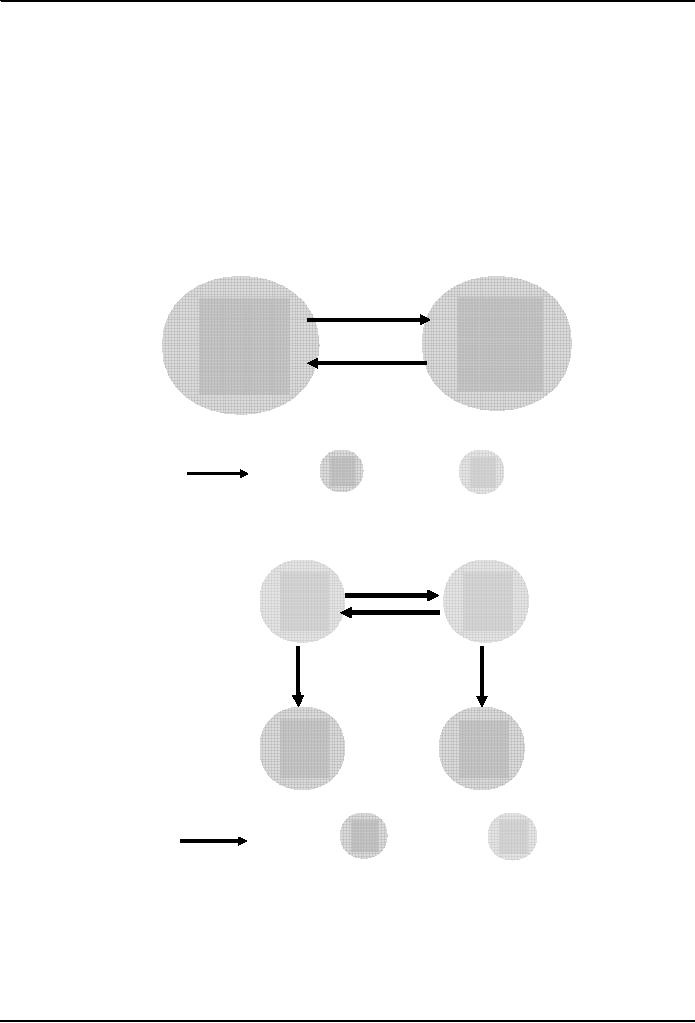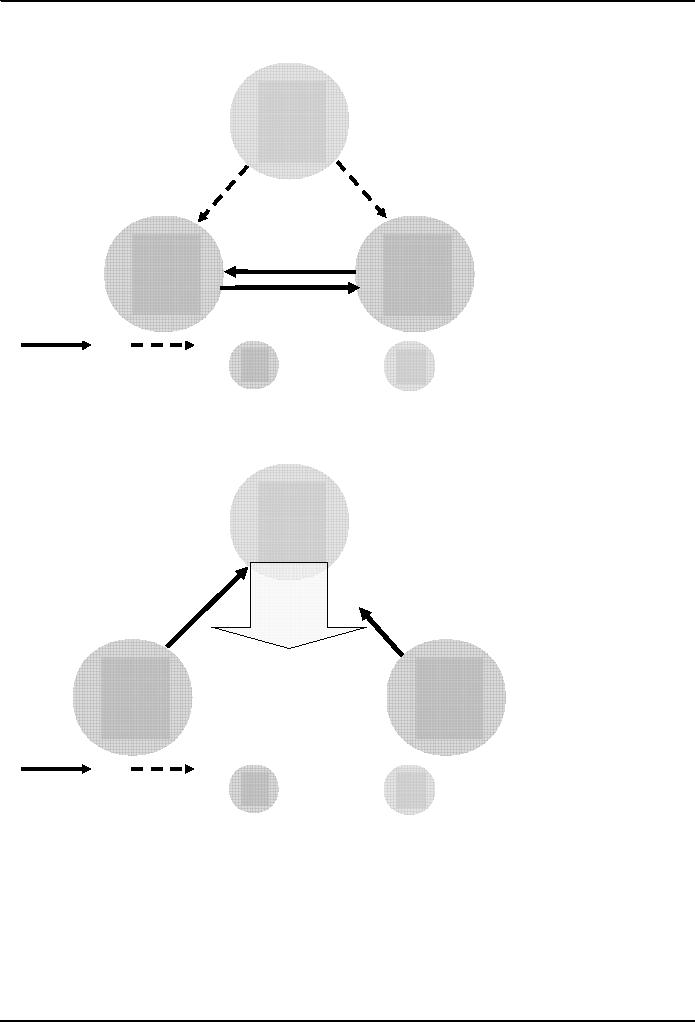 |

Conflict
Management HRM624
VU
Lesson
2
DISPUTE
RESOLUTION 1
Quotation
We should
look in society not for
consensus, but for in eliminable
and acceptable conflicts, and
for
rationally
controlled hostilities, as the normal condition of
mankind...Harmony and inner
consensus come
with
death.
Stuart
Hampshire (1914 - 2004)
British
philosopher.
Conflict
Conflict
is a natural and inevitable part of
all human social
relationships. Conflict occurs at
all levels of
society-intrapsychic,
interpersonal, intra-group, inter-group,
intra-national and international
(Sandole &
Staroste,
1987).
People
with different beliefs,
values and expectations
effectively live in different
worlds.
It
leads to: more they talk,
more they experience frustration
and hostility; may result in
violent conflict.
This
course deals with conflict
dynamics and cooperative process of
conflict management-negotiation,
meditation,
facilitation, problem solving, and
conflict resolution.
Emotions
in Conflict Management
Emotions
play an important role in the conflict
management, although it is only in
recent years that
their
effect is being
studied. Emotions have the
potential to play either a positive or
negative role in
negotiation.
During
negotiation, the decision as to whether or
not settle rests in part on
emotional factors.
Negative
emotions
can cause intense and
even irrational behavior, and
can cause conflicts to escalate
and negotiations
to
break down, while positive
emotions facilitate reaching an agreement
and help to maximize joint
gains.
Humans
have 400 emotions. Fear,
anger, depression, satisfaction
are the primary emotions.
Positive
affect in Negotiation
Even
before the negotiation process starts,
people in a positive mood have
more confidence, and
higher
tendencies
to plan to use a cooperative strategy.
During the negotiation, negotiators who
are in a positive
mood
tend to enjoy the interaction more,
show less contentious behaviour, use
less aggressive tactics
and
more
cooperative strategies.
Negative
affect in Negotiation
Negative
affect has detrimental effects on various
stages in the negotiation process.
Although various
negative
emotions affect negotiation outcomes, by
far the most researched is
anger. Angry negotiators
plan
to use
more competitive strategies
and to cooperate less, even
before the negotiation starts.
These
competitive
strategies are related to
reduced joint outcomes.
During negotiation, anger
disrupts the process
by
reducing the level of trust, clouding
parties' judgment, narrowing parties'
focus of attention and
changing
their
central goal from reaching
agreement to retaliating against the
other side.
The
effect of the Partners'
Emotions
Specific
emotions were found to have
different effects on the opponent's
feelings and strategies
chosen:
5

Conflict
Management HRM624
VU
a)
Anger
Anger
caused the opponents to place lower
demands and to concede more
in a zero sum
negotiation,
but
also to evaluate the negotiation
less favorably. It provoked
both dominating and yielding
behaviors
of the
opponent.
b)
Pride
Pride led to
more integrative and compromise
strategies by the partner.
c)
Guilt
Guilt
or regret expressed by the negotiator led
to better impression of her by the
opponent, however it
also
led the opponent to place higher
demands.
d)
Worry or Disappointment
Worry
or Disappointment left bad
impression on the opponent, but led to
relatively lower demands by
the
opponent.
Conflict
resolution
There
are many ways to resolve
conflicts - surrendering, running away,
overpowering your opponent
with
violence,
filing a lawsuit, etc. The
movement toward Alternative Dispute
Resolution (ADR), sometimes
referred to simply
as conflict resolution, grew out of the
belief that there are better
options than using
violence or going
to court. Today, the terms ADR and
conflict resolution are used
somewhat
interchangeably
and refer to a wide range of processes
that encourage nonviolent
dispute resolution
outside
of the
traditional court system.
The field of conflict
resolution also includes
efforts in schools
and
communities
to reduce violence and bullying
and help young people develop communication
and problem-
solving
skills.
Alternative
Dispute Resolution (ADR)
Dispute
resolution processes used in the
resolution of legal, commercial,
and other interpersonal conflicts
a)
Other than litigation
b)
Other than doing
nothing
c)
Other than illegal or violent
means
In
simple words, alternative Dispute Resolution, or
ADR, is a way of resolving disputes
without going to
court.
Forms
of resolving conflict (Alternative Dispute
Resolution)
Common forms of
conflict resolution include:
a)
Negotiation
b)
Meditation
c)
Conciliation
d)
Arbitration
e)
Adjudication
Negotiation
Negotiation
is
a discussion among two or
more people with the goal of
reaching an agreement.
Broadly
speaking, negotiation is an interaction
of influences. Such interactions, for
example, include the
process
of resolving disputes, agreeing upon
courses of action, bargaining for
individual or collective
advantage,
or crafting outcomes to satisfy
various interests. Negotiation is
thus a form of alternative
dispute
resolution.
6

Conflict
Management HRM624
VU
Negotiation
involves two basic elements: the
process and the substance.
The process refers to how
the
parties
negotiate the context of the negotiation,
the parties to the negotiation, the relationships
among these
parties,
the communication between these parties
and the tactics used by the
parties. The substance
refers to
what the
parties negotiate over, the agenda the
issues, the options, and the
agreements reached at the
end.
Meditation
Mediation
is
a voluntary and confidential
process in which a neutral third-party
facilitator helps people
discuss
difficult issues and
negotiate an agreement. Basic
steps in the process include gathering
information,
framing
the issues, developing options, negotiating,
and formalizing agreements.
Parties in mediation create
their
own solutions and the mediator does
not have any decision-making
power over the outcome.
Conciliation
Conciliation
is
the least intrusive of third-party
processes. A neutral person agreeable to
all parties is
selected
to serve as conciliator. The conciliator
serves as a go-between. Typically the
conciliator meets
separately
with each party in attempts to
persuade the parties to proceed
with each other. Thus,
the
conciliator's
primary role is to reestablish or improve
communication between the parties.
When
the parties are too angry to
speak with each other, a
conciliator may be all that
is needed.
Arbitration
Arbitration
is
a process in which a third-party neutral,
after reviewing evidence and listening to
arguments
from
both sides, issues a
decision to settle the case.
Arbitration is often used in
commercial and
labor/management
disputes.
Adjudication
Adjudication
is the legal process by which an
arbiter or judge reviews
evidence and argumentation
including
legal
reasoning set forth by opposing
parties or litigants to come to a
decision which determines rights
and
obligations
between the parties
involved.
Three
types of disputes are
resolved through adjudication:
a)
Disputes between private
parties, such as individuals or
corporations.
b)
Disputes between private
parties and public
officials.
c)
Disputes between public
officials or public
bodies.
Interdependent
relationship
Contrient
interdependence
Defined
meeting one party's
goals is seen to harm the
other party's goals.
Zero-sum
situations are those seen by
the parties as perfectly contrient the
more one party is benefited
the
more the other is harmed. In
other words, benefit "sums
to zero."
Promotive
interdependence
Interdependence
may also be positive (known
as "promotive interdependence").
Defined
meeting one party's
goals is seen to promote the
other party's goals
Virtually
all conflicts combine promotive and
contrient interdependence.
An interpersonal
conflict in which both the
promotive and contrient
aspects of interdependence
are
recognized
is known as a "mixed-motive"
situation.
7

Conflict
Management HRM624
VU
Alternative
Dispute Resolution (ADR) in
Pakistan
Various alternative
dispute resolution (ADR)
techniques are used in
Pakistan. Some of the relevant
laws/provisions
dealing with ADR are as
follows:
1.
Section 89-A of the Civil
Procedure Code, 1908 (as
amended in 2002) read with
Order X Rule 1-A
(deals
with alternative dispute resolution
)
2. The
small Claims and Minor
Offences Courts Ordinance,
2002
3.
Sections 102-106of the Local Government Ordinance,
2001
4.
Sections 10 and 12 of the Family Courts
Act, 1964
5. The
Arbitration Act, 1940
6.
Article 156 of the Constitution of
Pakistan, 1973 (National Economic
Council)
7.
Article 184 of the Constitution of
Pakistan, 1973 (Original Jurisdiction
when federal of
provincial
governments
are at dispute with one
another)
Parties
to Conflict
Disputants
In the
interpersonal conflict, those who
have incompatible goals are
called disputants.
Disputants
may be individuals, groups, corporations,
congregations, communities, nations, or
any collective
of
people.
Agents
One
who acts on behalf of a disputant is
called an agent.
Or a
representative who acts on behalf of
other persons or organizations is
called an agent.
Advocate
An
advocate is a kind of agent.
The one who speaks on behalf
of another, especially in a legal context
is
called
an agent. Implicit in the concept is the
notion that the represented
lacks the knowledge, skill,
ability,
or
standing to speak for
themselves. Common advocates include
lawyers, activists, and
public relations
consultants.
Dispute
Dispute is a
disagreement or argument about
something important.
Dispute
Resolution
The
methods that people use to
resolve interpersonal conflicts are
called dispute resolution.
Advantages
of ADR
· Less
formal
· Less
costly and
· Less
time-consuming than going to
court.
· Results
are specific to your
needs
Factors
that Distinguish Dispute Resolution
Processes
Dispute
resolution processes are distinguished
from each other on the
following bases:
· Who
decides the outcome?
· Who
participates in the process?
· Under
what auspices is the process
provided?
8

Conflict
Management HRM624
VU
Negotiation
and Adjudication
Negotiation:
dialogue or communication between the
disputants aimed at settling interpersonal
conflict.
Adjudication:
process in which neutral third party
renders binding decision in interpersonal
conflict.
Negotiation
Models
Negotiation
Figure
Disputant
Disputant
"Persuade"
directions
Decision
makers
Other
participants
Negotiation
with Agents or
Advocates
Agent
Agent
or
or
advocate
advocate
Disputant
Disputant
Other
Decision
makers
participants
"Persuade"
directions
9

Conflict
Management HRM624
VU
Mediation
Model
Neutral
Disputant
Disputant
"Persuade"
"Assist"
Other
Decision
makers
directions
directions
participants
Nonbinding
Evaluation
Neutral
Non-
binding
decision
Disputant
Disputant
"Persuade"
"Assist"
Other
Decision
makers
directions
directions
participants
10

Conflict
Management HRM624
VU
Basic
Dispute Resolution
Forms
Agent
or
advocate-
Simple
assisted
Negotiation
Assisted/
Mediation
Facilitated
Mixed/Hybrid
Nonbinding
ADR
Evaluation
Litigation
Agency
Adjudication
Adjudication
Arbitration
11
Table of Contents:
- INTRODUCTION TO CONFLICT:Dispute, Legal Dispute, Call the police
- DISPUTE RESOLUTION 1:Positive affect in Negotiation, Alternative Dispute Resolution
- DISPUTE RESOLUTION II:Adjudication, Litigation, Mediation-Arbitration
- PRECONCEPTIONS ABOUT CONFLICT I:Pedagogical development, Pressures against Innovation
- PRECONCEPTIONS ABOUT CONFLICT II:Cultural beliefs about interpersonal conflict, Why strategies of change fail
- CONFLICT DIAGNOSIS:Who Needs to Know About Conflict Diagnosis?, Steps in Conflict Diagnosis
- RECURRENT THEMES IN CONFLICT DIAGNOSIS I:The Seven Steps of Social Behavior, Seven steps to diagnose conflict
- RECURRENT THEMES IN CONFLICT DIAGNOSIS II:Themes of Conflict Diagnosis
- DESCRIBING THE CONFLICT I:Description of Conflict, Identifying Interpersonal Conflict
- DESCRIBING THE CONFLICT II:Step 1 for Conflict Diagnosis, interpersonal or intrapersonal
- SOURCES AND CAUSES OF CONFLICT I:Main Sources of Conflict, Discussing major sources of conflict
- SOURCES AND CAUSES OF CONFLICT II
- INTEREST ANALYSIS I:Analyzing your interests, Analyzing the other disputant’s interests
- INTEREST ANALYSIS II:What are interests?, Tips for Interest Trees
- INTEREST ANALYSIS II:Principles and values, Basic Human Needs
- ASSESSING THE CHARACTER OF THE CONFLICT I, Premises of Deutsch’s Theory
- ASSESSING THE CHARACTER OF THE CONFLICT II:Techniques to transform competitive conflict into cooperative
- TRUST AND ITS SIGNIFICANCE I:What is Mistrust,Trust and business,Three levels of trust
- TRUST AND ITS SIGNIFICANCE II:Advantages of high trust level, Building of trust
- ASSESSING IMPEDIMENTS TO RESOLVE THE CONFLICT I:Motivation to seek vengeance, Mistrust
- ASSESSING THE IMPEDIMENTS TO RESOLVING THE CONFLICT II:Disempowered Disputant, Unpleasant Disputant
- ASSESSING THE NEGOTIATING STYLE I:Dual Concern Model, Dominating or competition style
- ASSESSING THE NEGOTIATING STYLE:Dual Concern Model, Tactics Used In Integrating
- ASSESSING POWER AMONG DISPUTANTS:Conflict and Power, Kinds of power in the Relationship Domain
- ASSESSING POWER AMONG DISPUTANTS II:Sources of Relationship Power, Context and Power
- POWER, CONFLICT, AND BATNA III:Role of Third Party in BATNA, Dealing with Power Imbalance
- STEREOTYPES, DIVERSITY, AND CONFLICT I:Stereotyping, Stereotyping in Interpersonal Conflict
- STEREOTYPES, DIVERSITY, AND CONFLICT:Categories of Diversity Issues, Seven Mental Processes to Prove Stereotypes
- STEREOTYPES, DIVERSITY AND CONFLICT III:Individual Difference and Social Category, Cultural differences in values
- MEDIATION I:When is mediation required, Processes Related to Mediation, Product of Mediation
- MEDIATION II:Important distinguishing factors, More Advantages and Disadvantages of Pure Mediation
- ADVANTAGES AND DISADVANTAGES OF MEDIATION I:Efficiency Consideration, Conflict Management and Prevention
- ADVANTAGES AND DISADVANTAGES OF MEDIATION II:Quality of Consent, Effects on the parties to mediation
- PROCESS OF MEDIATION:Stages of Mediation, Facilitative tactics in mediation
- LAW AND ETHICS OF MEDIATION I:Characteristics of mediation, Confidentiality
- LAW AND ETHICS OF MEDIATION II:Role of ethics in mediation, 8 Dimensions of Ethics in Mediation
- ARBITRATION I:Ways to Resolve Conflict, Advantages of Arbitration, Disadvantages of Arbitration
- ARBITRATION II:Varieties of Arbitration, Process of Arbitration, Contents of Arbitration Act
- NON BINDING EVALUATION:Disadvantage, Varieties of Non-binding Evaluation
- NON BINDING EVALUATION II:Varieties of Non-binding Evaluation, Advantages and disadvantages of Non-binding Evaluation
- MIXED AND MULTIMODAL DISPUTE RESOLUTION:Six System Design Principles, Extensions of Dispute Systems Design
- POWER TOOLS AND MAGIC KEYS I:Introduction, Necessity of conflict diagnosis, Using conflict diagnosis
- POWER TOOLS AND MAGIC KEYS II:Proposed Contents of a Clients’ Interview, Impediments to use facilitative mediation
- PANCHAYAT, LOCAL GOVERNMENT SYSTEM, AND ADR, Definitions of Panchayat, Definition of Jirga
- SUMMARY AND MESSAGE OF THE COURSE:Definitions of conflict, Negotiation, Meditation, Adjudication